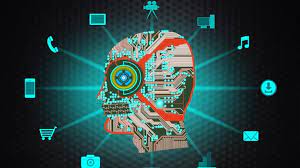In the dynamic realm of software development services, the integration of Artificial Intelligence (AI) and Machine Learning (ML) is ushering in a transformative era. It’s creating a synergy where human ingenuity collaborates with intelligent algorithms, optimizing processes, automating tasks, and setting the stage for unprecedented innovation. By examining the immense potential of machine learning, we’ll delve into how it reshapes software development and how a software development agency can effectively harness it.
Unraveling Machine Learning – The Foundations
Machine learning, a subset of AI, focuses on crafting computer algorithms that learn from data and make decisions or predictions without explicit programming. It’s a tool capable of training on vast datasets, identifying patterns, relationships, and insights, thereby automating decision-making processes and solving intricate problems.
Machine learning encompasses techniques like supervised, unsupervised, and reinforcement learning. A machine learning system consists of several components such as data preprocessing, feature engineering, model training and evaluation, and model deployment and monitoring. These elements collaborate to craft powerful and precise machine learning models.
Machine Learning – The Game Changer in Software Development Services
How exactly does machine learning revolutionize the landscape of software development services? Here’s a snapshot of its practical applications:
Predictive Analytics
Machine learning paves the way for software development to predict outcomes based on historical data. This ability finds its footing in customer behavior analysis, recommendation systems, fraud detection, and prevention.
Natural Language Processing (NLP)
Machine learning empowers software to comprehend and process human language. NLP finds its use in sentiment analysis, text classification, language translation, and chatbots, enhancing user interactions.
Computer Vision
Machine learning algorithms enable software to analyze and interpret visual data. Applications like object detection, image recognition, facial recognition, and biometric systems are examples of its use in software development.
Anomaly Detection
Machine learning excels in identifying unusual patterns or behaviors in data. It’s invaluable in detecting network intrusions and monitoring system health, ensuring the robustness of the software.
Challenges in Leveraging Machine Learning
While machine learning brings immense potential, there are hurdles and considerations to remember when incorporating it into software development:
Data Quality and Quantity
High-quality and diverse datasets are essential for training accurate machine learning models. Acquiring and preprocessing relevant data can be a time-consuming and complex process.
Ethical Considerations and Bias
Machine learning models can inadvertently perpetuate bias or discrimination present in the training data. Addressing ethical considerations and ensuring fairness when deploying machine learning solutions is crucial.
Model Interpretability and Explainability
As machine learning models become more complex, interpreting and explaining their decisions can be challenging. This poses challenges in scenarios where transparency is required.
Scalability and Computational Resources
Training and deploying machine learning models require significant computational resources. Scalability becomes a concern when dealing with large datasets or real-time applications.
Best Practices for a Software Development Company
To effectively harness the power of machine learning, a software development company should follow these best practices:
Define Clear Goals
Begin with a clear problem statement and establish specific goals for your machine learning project.
Data Quality Matters
Invest time in collecting, cleaning, and preprocessing data. Ensure your data is representative, free from bias, and relevant to the problem you’re addressing.
Choose Appropriate Machine Learning Algorithms
Select machine learning algorithms that are well-suited to your problem. Many bootcamp software engineer courses guide participants in choosing and implementing the right machine learning algorithms for diverse challenges. Different algorithms excel in various scenarios.
Train and Evaluate Models Effectively
Split your data into training and evaluation sets, train your models, and rigorously evaluate their performance using appropriate metrics.
Deploy and Monitor Models
Once a model is trained, deploy it in a production environment and continuously monitor its performance to ensure it remains effective and accurate.
Real-World Examples of Machine Learning in Software Development
Real-world examples demonstrate the impact of machine learning in software development:
Netflix’s Recommendation System
Netflix uses machine learning algorithms to analyze user preferences and provide personalized recommendations, enhancing the user experience.
Google’s Language Translation Services
Google Translate leverages machine learning to provide accurate translations between languages, enabling seamless communication across cultures.
Uber’s Surge Pricing Algorithm
Uber’s pricing algorithm utilizes machine learning to determine fare prices based on supply and demand, optimizing revenue while balancing rider and driver satisfaction.
Facebook’s Facial Recognition Technology
Facebook uses machine learning to identify and tag individuals in photos, providing users with a convenient and user-friendly experience.
Future Trends in Machine Learning Software Development
The future of machine learning in software development services holds exciting prospects:
Reinforcement Learning and Self-learning Systems
Reinforcement learning, where software agents learn from trial and error, has the potential to create self-learning systems capable of adapting to new situations.
Generative Adversarial Networks (GANs) and Synthetic Data Generation
GANs can generate synthetic data that resembles real data, expanding possibilities in areas with limited datasets.
Edge Computing and Internet of Things (IoT) Applications
Machine learning on edge devices and IoT devices will enable real-time and decentralized decision-making, reducing latency, and enhancing privacy.
Explainable AI and Responsible AI Practices
There is a growing focus on developing models that can explain their decisions, fostering transparency and ethical use of machine learning.
Conclusion
Machine learning has become a game-changer in software development services, unlocking innovative applications and transforming industries. By understanding the fundamentals, embracing best practices, and considering the challenges, software development company can harness the power of machine learning to build intelligent and impactful solutions. As machine learning continues to evolve, its potential to shape the future of software development remains immense. Embrace the possibilities and embark on the journey of unlocking the true potential of machine learning in your software projects. The time to harness the power of machine learning in software development is now.

